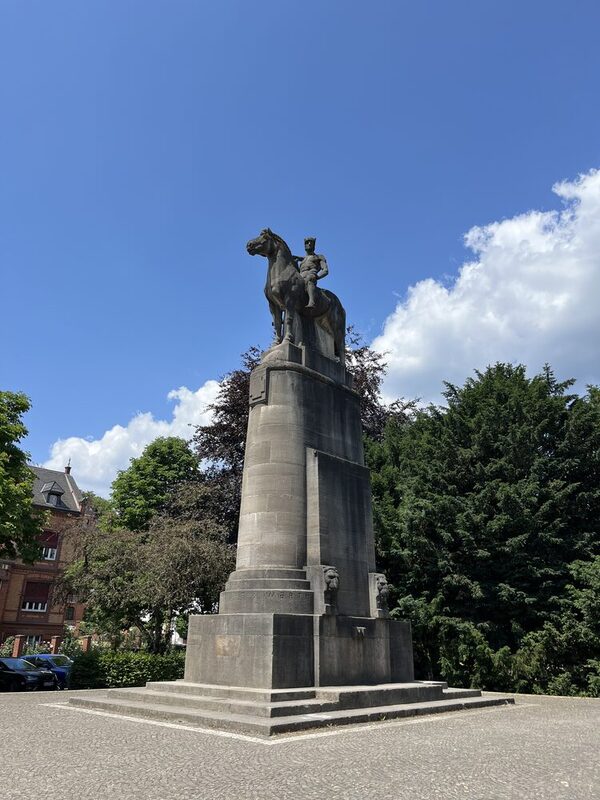War memorial in the Nero Valley
The war memorial at the beginning of the Nero Valley, a 10-metre-high equestrian monument made of granite and shell limestone, shows a Germanic warrior with a winged helmet on an unsaddled horse shouldering a club. The monument was erected in honor of the soldiers and officers of the two Nassau infantry regiments No. 87 and 88 who died in the Franco-Prussian War of 1870/71. A Germania monument by the Wiesbaden sculptor Hermann Schies had stood on the same site from 1873, which had to be demolished a few decades later due to dilapidation.
There were bitter discussions in Wiesbaden about the erection of the new monument, whereupon the city launched a competition in 1907. From the 235 entries, it finally selected the proposal by architect Carl Krause and sculptor Franz Prietel (both from Berlin). Their design, which envisaged an archaic equestrian figure whose stance was intended to symbolize dignity and strength, was unusual. Comparable monuments commemorating the war of 1870/71 usually showed soldiers, cannon barrels and the Prussian eagle. The publication of the memorial design led to a renewed outcry of indignation in Wiesbaden, as the equestrian figure was unclothed. In addition, the statue had been so damaged during transportation that the artist felt compelled to create the figure a second time. The war memorial was finally unveiled on May 9, 1909.
Literature
Sigrid Russ, editor, Denkmaltopographie Bundesrepublik Deutschland. Cultural monuments in Hesse. Wiesbaden II - The villa areas. Ed.: Landesamt für Denkmalpflege Hessen, 2nd revised edition, Stuttgart 1996 [p. 389].
Wiesbadener Denkmäler, Wiesbaden 2004 [p. 102].
